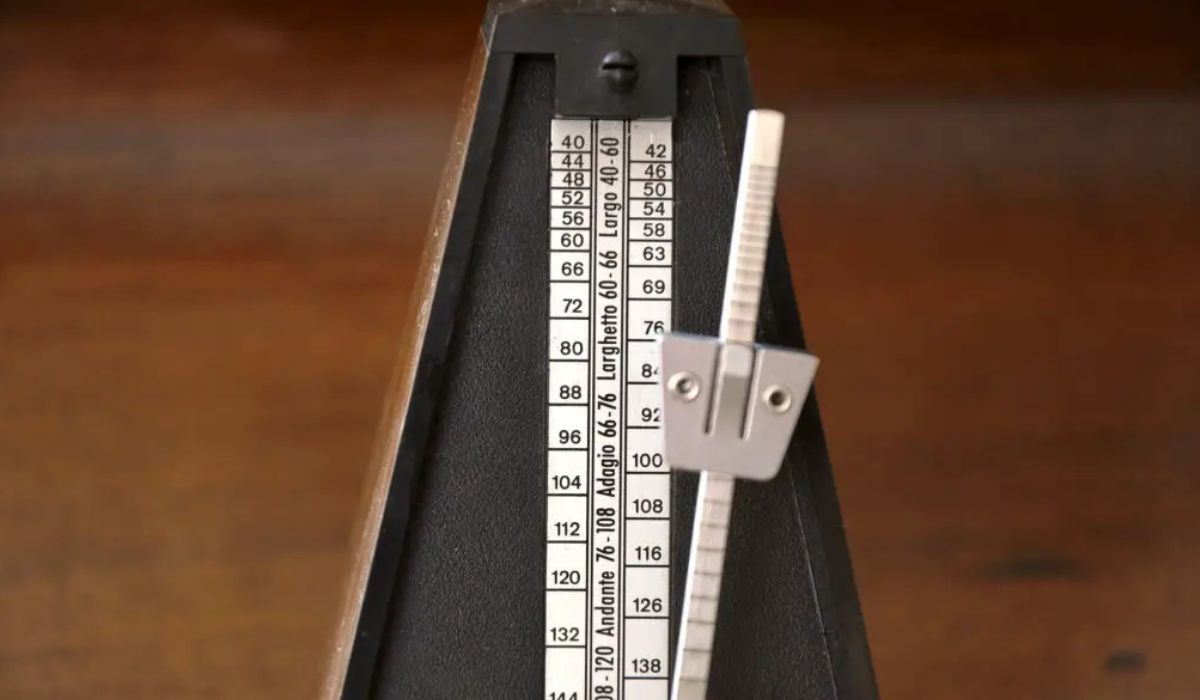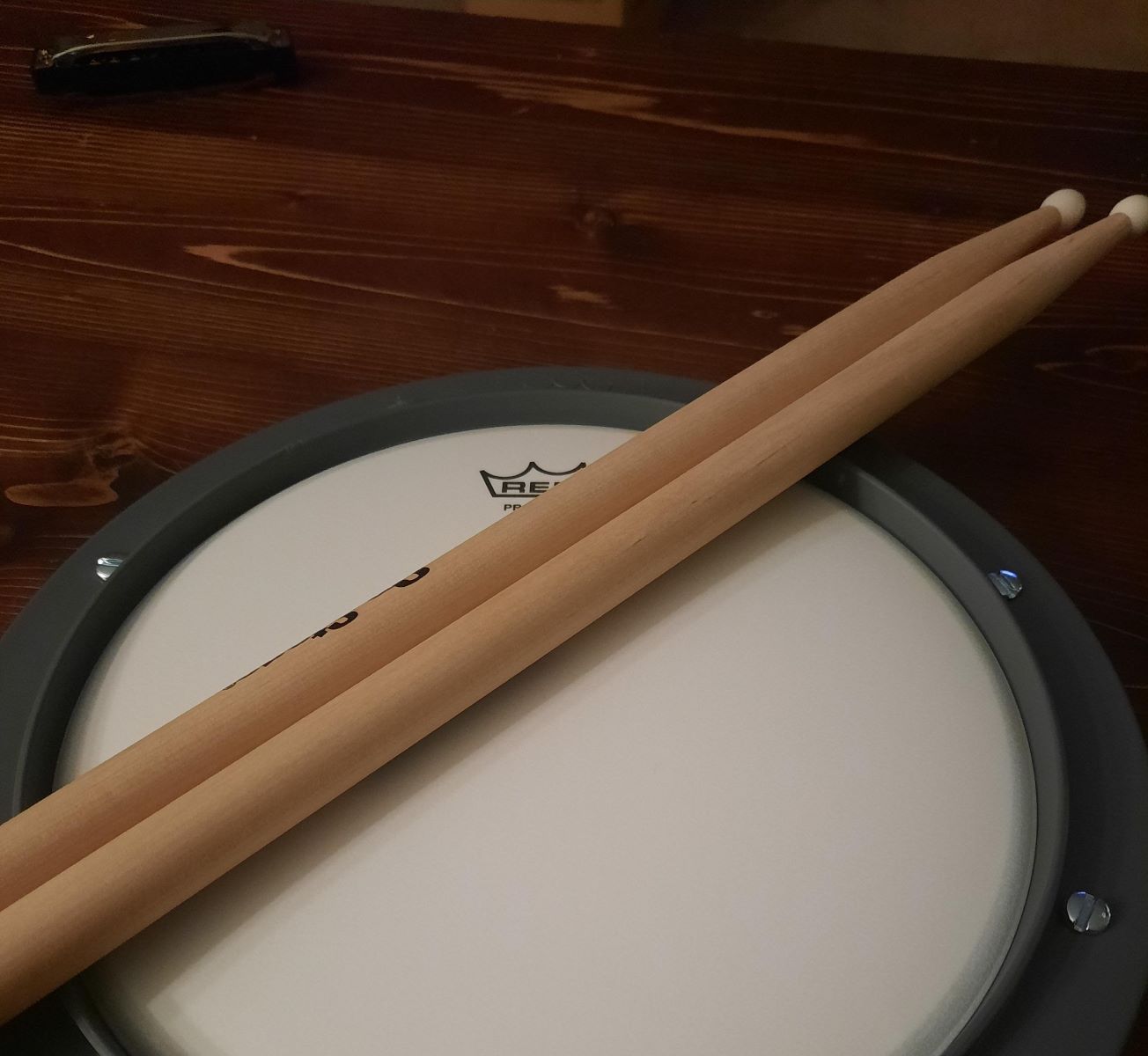Home>Instruments>Drums>How To Store Drums Long-Term


Drums
How To Store Drums Long-Term
Published: February 7, 2024
Learn the best methods for storing drums long-term to protect their quality and performance. Discover essential tips for preserving your drums for extended periods.
(Many of the links in this article redirect to a specific reviewed product. Your purchase of these products through affiliate links helps to generate commission for AudioLover.com, at no extra cost. Learn more)
Table of Contents
Introduction
Drums are more than just musical instruments; they are cherished possessions that hold sentimental value for many musicians. Whether you’re a professional drummer or a passionate hobbyist, ensuring the long-term preservation of your drums is essential for maintaining their quality and performance. Proper storage is crucial in safeguarding your drums from damage caused by environmental factors such as temperature fluctuations, humidity, and dust accumulation. This comprehensive guide will provide you with valuable insights and practical tips on storing your drums long-term, allowing you to protect your investment and extend the lifespan of your beloved instruments.
By following the recommendations outlined in this article, you’ll gain a deeper understanding of the necessary steps to safeguard your drums from potential harm while they are not in use. From choosing the right storage space to implementing regular maintenance routines, each aspect plays a vital role in ensuring that your drums remain in optimal condition for years to come.
Let’s delve into the details of how to store drums long-term, empowering you to preserve the integrity and sound quality of your cherished musical instruments.
Choosing the Right Storage Space
When it comes to storing your drums long-term, selecting an appropriate storage space is the first crucial step. Ideally, the chosen space should be free from extreme temperature fluctuations, excessive humidity, and direct sunlight exposure, as these factors can significantly impact the condition of your drums over time. If possible, opt for a climate-controlled environment to minimize the effects of temperature and humidity on the drums.
Consider utilizing a dedicated storage area such as a spare room, basement, or garage, where the drums can be safely housed without being subjected to daily activities or potential hazards. If using a garage or basement, ensure that the space is well-insulated and protected from moisture to prevent rust and corrosion on metal components of the drums.
Furthermore, it’s advisable to keep the drums away from areas with high foot traffic or the risk of accidental impact. This helps to reduce the likelihood of unintentional damage caused by collisions or mishandling. By carefully assessing and selecting the right storage space for your drums, you can establish a secure and suitable environment that promotes their long-term preservation.
Cleaning and Preparing the Drums
Prior to storing your drums long-term, it’s essential to thoroughly clean and prepare them to prevent the accumulation of dirt, dust, and other contaminants that could potentially compromise their condition. Begin by removing all drumheads and hardware from the shells to facilitate a comprehensive cleaning process. Use a mild, non-abrasive cleaner to gently wipe down the drum shells, ensuring that any residual dirt or stick marks are effectively removed without causing damage to the finish.
Inspect the metal hardware, including tension rods, lugs, and rims, and clean them using a suitable metal polish or cleaner to prevent corrosion and maintain their appearance. Additionally, take the time to clean and condition the drumheads to preserve their integrity and prevent deterioration over time. Properly cleaning and conditioning the drumheads can help to retain their tension and tone, which is crucial for maintaining the overall sound quality of the drums.
Once the cleaning process is complete, allow all components of the drums to thoroughly dry before proceeding with the storage preparations. This step is vital in preventing the formation of mold or mildew within the drums, particularly if they are stored in a humid environment. By ensuring that your drums are clean, dry, and free from contaminants, you can mitigate the risk of damage and degradation during the storage period, ultimately prolonging the lifespan of your instruments.
Disassembling the Drum Set
Before storing your drum set long-term, it’s advisable to disassemble the components to minimize the risk of damage and ensure efficient use of storage space. Start by carefully removing the drumheads and hardware from the shells, taking care to label and organize the components for easy reassembly in the future. As you disassemble the drum set, make a note of any worn or damaged parts that may require replacement or repair before the drums are used again.
Separate the individual drums, cymbals, stands, and hardware, and consider investing in protective cases or padded bags to safeguard these components during storage. Properly packing and organizing the disassembled parts not only prevents potential damage from accidental impacts but also facilitates a more organized and efficient storage arrangement. Additionally, storing the components separately reduces the overall weight and bulk, making it easier to transport and maneuver the drums as needed.
As you disassemble the drum set, take the opportunity to inspect each component for any signs of wear, damage, or mechanical issues. Addressing these issues promptly can prevent further deterioration and ensure that the drums are in optimal condition when they are next assembled for use. By disassembling the drum set and carefully organizing its components, you can streamline the storage process and proactively address any maintenance or repair needs, ultimately preserving the quality and functionality of your drums.
Protecting the Drums from Environmental Factors
Shielding your drums from environmental factors is crucial in maintaining their condition during long-term storage. Temperature and humidity fluctuations can have detrimental effects on the structural integrity and performance of the drums, making it essential to implement protective measures. Consider using drum covers or breathable fabric wraps to shield the drums from dust, moisture, and potential scratches while in storage. These covers provide an additional layer of protection, safeguarding the drums from environmental elements and preserving their aesthetic appeal.
Furthermore, if the storage space is susceptible to humidity or moisture, investing in desiccant packs or humidity control products can help mitigate the risk of mold, mildew, and corrosion. Placing desiccant packs inside the drum shells and storage containers can absorb excess moisture, preventing potential damage to the drum shells, hardware, and drumheads. Additionally, regularly monitoring the storage environment for any signs of moisture or humidity buildup is essential in proactively addressing these factors and ensuring the long-term preservation of your drums.
When storing cymbals, it’s important to protect them from tarnishing and discoloration caused by exposure to air and moisture. Consider using cymbal sleeves or investing in padded cymbal bags to shield them from environmental elements and minimize the risk of oxidation. Properly storing and protecting the cymbals not only preserves their visual appeal but also maintains their tonal quality, ensuring that they remain in optimal condition for future use.
By implementing these protective measures, you can safeguard your drums and associated components from environmental factors, preserving their structural integrity, aesthetic appeal, and overall performance during the storage period.
Storing the Drums Properly
Proper storage of your drums is essential for maintaining their condition and ensuring that they remain in optimal playing condition when not in use. When storing the disassembled drum components, it’s important to utilize sturdy and appropriately sized containers or cases that offer sufficient protection and cushioning. Invest in padded drum cases or hard-shell containers to safeguard the drum shells, hardware, and components from potential impacts and damage during storage and transportation.
When arranging the drums in storage containers, take care to position them in a secure and stable manner, minimizing any movement or shifting during transit or while in storage. Utilize protective padding or cushioning materials to prevent the drums from coming into direct contact with each other, reducing the risk of scratches, dents, or other forms of damage. Additionally, storing the drums in a secure and stationary position within the containers helps maintain their alignment and structural integrity over time.
For cymbals, consider utilizing cymbal-specific cases or bags that provide individual compartments and padding to prevent metal-on-metal contact and minimize the risk of cracks or structural damage. Properly securing and cushioning the cymbals within the cases ensures that they remain protected and retain their tonal quality throughout the storage period.
Labeling the storage containers with the contents and assembly instructions can streamline the retrieval and reassembly process when the drums are ready for use. This organized approach reduces the likelihood of misplacing components and facilitates a more efficient setup when the drums are retrieved from storage.
By storing the drums in dedicated containers with proper cushioning and labeling, you can safeguard the components from damage and ensure that they remain in optimal condition for future use, ultimately prolonging the lifespan and performance of your cherished musical instruments.
Regular Maintenance and Check-Ups
While your drums are in long-term storage, it’s important to implement a routine maintenance schedule to ensure that they remain in optimal condition and are ready for use when needed. Regularly inspect the storage environment for any signs of moisture, temperature fluctuations, or other environmental factors that could impact the drums. Addressing these issues promptly can prevent potential damage and preserve the integrity of the instruments.
Periodically check the drums and associated components for any signs of wear, corrosion, or mechanical issues. This includes inspecting the drum shells, hardware, drumheads, and cymbals for any visible damage or deterioration. Address any concerns immediately to prevent further degradation and maintain the quality of the drums over time.
Rotate the storage containers or reposition the drums within the storage space to minimize the impact of prolonged pressure or weight on specific areas of the drums. This practice helps to prevent warping or distortion of the drum shells and hardware, ensuring that they retain their original shape and functionality.
For drumheads, consider loosening the tension periodically to relieve stress on the material and prevent potential stretching or warping. This simple maintenance practice can help prolong the lifespan of the drumheads and maintain their tonal quality when the drums are eventually reassembled for use.
Additionally, if the storage environment is subject to seasonal changes or prolonged periods of inactivity, consider airing out the drums and components periodically to prevent stagnation and minimize the risk of moisture buildup. Allowing the drums to breathe and acclimate to the storage environment can help mitigate the effects of prolonged confinement and promote their long-term preservation.
By incorporating regular maintenance and check-ups into your drum storage routine, you can proactively address potential issues and ensure that your drums remain in optimal condition, ready to deliver exceptional sound and performance when they are retrieved for use.
Conclusion
Effectively storing drums long-term is a critical aspect of preserving their quality, performance, and longevity. By carefully selecting an appropriate storage space, cleaning and preparing the drums, disassembling the drum set, protecting the drums from environmental factors, and storing the drums properly, you can safeguard your cherished instruments from potential damage and degradation.
Ensuring that the drums are clean, dry, and free from contaminants before storage is paramount in preventing deterioration and maintaining their structural integrity. Disassembling the drum set and organizing its components not only optimizes storage space but also allows for thorough inspection and maintenance of each part, addressing any issues that may arise before they worsen.
Protecting the drums from environmental factors such as temperature fluctuations, humidity, and dust is essential in preserving their aesthetic appeal and performance. Utilizing appropriate storage containers, cushioning materials, and protective covers ensures that the drums remain shielded from potential harm during the storage period.
Implementing a routine maintenance schedule and check-ups while the drums are in storage allows for proactive monitoring and addressing of any issues that may impact the instruments. This approach helps to maintain the quality and functionality of the drums, ensuring that they are ready for use when retrieved from storage.
By following the comprehensive guidelines outlined in this article, you can effectively store your drums long-term, protecting your investment and preserving the sound quality and performance of your beloved musical instruments. With proper care and attention to storage practices, your drums will continue to bring joy and inspiration for years to come.











